The Corsair SF450 Platinum SFX PSU Review: Corsair's Best SFF PSU Gets Even Better
by E. Fylladitakis on October 23, 2018 8:00 AM EST- Posted in
- Cases/Cooling/PSUs
- Corsair
- PSUs
- 450W
- SFX
The Corsair SF450 450W SFX PSU
External Appearance
Corsair’s latest upgrade of the SF series perfectly matches the size requirements of the SFX standards, measuring 125 × 63.5 × 100 mm / 4.92 × 2.5 × 3.94 in (W×L×D). Its chassis is sprayed with a matte black paint that is slightly resistant to fingermarks. The size of the chassis limited the designer to using a 92 mm fan, the grey blades of which create a subtle visual antithesis with the matte black chassis and glossy black finger guard.
Corsair placed a decorative sticker on the left side of the chassis, where it will be visible from a windowed side panel. We also found the company logo engraved in between a parallel rib pattern at the top side of the chassis, probably because the designer expects users to install this PSU with its fan facing downwards (assuming a “classic” tower case with a windowed left side panel). The sticker with the electrical specifications and certifications of the unit is on the right side of the chassis.
On the rear side of the Corsair SF450 PSU we can see an AC cable receptacle, a small switch, and a small label with the unit’s model number. The front side hosts the connectors for the modular cables and a very basic legend. Different cables use different connectors and cannot be mismatched. Note that PCIe and CPU 12V cables are using the same connectors on the PSU’s side.
Internal Design
The 92 mm fan taking care of this PSU’s cooling needs is actually the same NR092L low-profile fan that Corsair has been using with the previous version of the series. According to its identification number, Corsair appears as the manufacturer of the fan, so haven't been able to determine who the OEM behind its creation really is. What we do know is that it has a rifle bearing engine and a maximum speed of 3950 RPM. Running anywhere near that speed would make the small 92 mm fan very loud but, as we will see in the following pages, the high efficiency of the PSU allows it to keep the fan’s speed low under normal operating conditions.
The OEM behind the new Corsair SF450 is none other than Great Wall, the Chinese company that nowadays is behind several high-performance designs. The platform appears to be the same as the one Corsair used for the original SF series, which were granted the 80Plus Gold efficiency certification. We do not have one of the older units at our disposal for a thorough comparison but, comparing it to the reference design images, it appears that Great Wall achieved the higher efficiency certification level by simply using newer and more efficient active components. If there are any layout/design changes, these should be minor.
The filtering stage begins on the tiny PCB at the back of the AC receptacle and continues onto the main PCB, with a total of four Y capacitors, two X capacitors, and three filtering inductors. A very simple, straight heatsink holds the single rectification bridge, as well as the APFC and primary inversion circuit active components. The APFC circuitry consists of a single transistor and a diode that are paired with a comparatively very large coil and capacitor. The bulky 420V/390μF capacitor is supplied by Nippon Chemi-Con and is perhaps a bit too large for a 450W PSU.
Despite the high efficiency certification of the Corsair SF450 PSU, the circuitry actually is relatively simple. The heart of the primary inversion stage are two MOSFETs that form a standard half-bridge LLC inverter. Four MOSFETs at the secondary side of the transformer generate the 12V line of the PSU and two DC-to-DC circuits on the vertical daughterboard generate the nowadays secondary 5V/3.3V lines. All of the secondary side capacitors, electrolytic and polymer alike, are supplied by Nippon Chemi-Con as well.


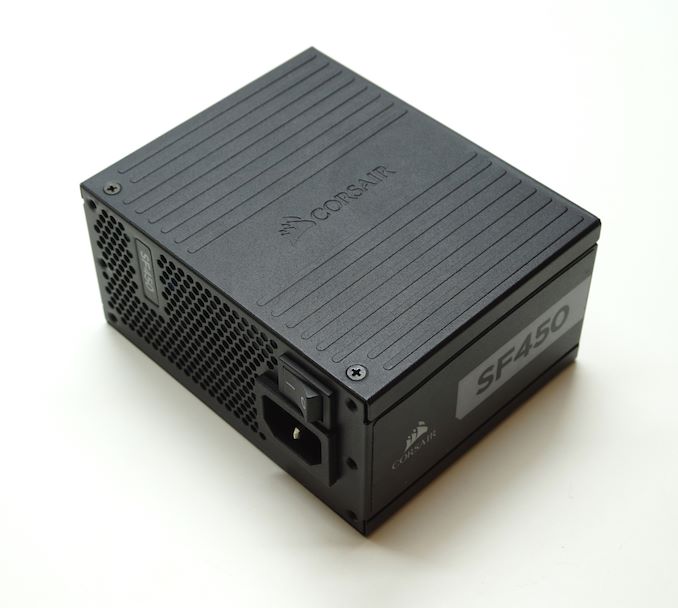
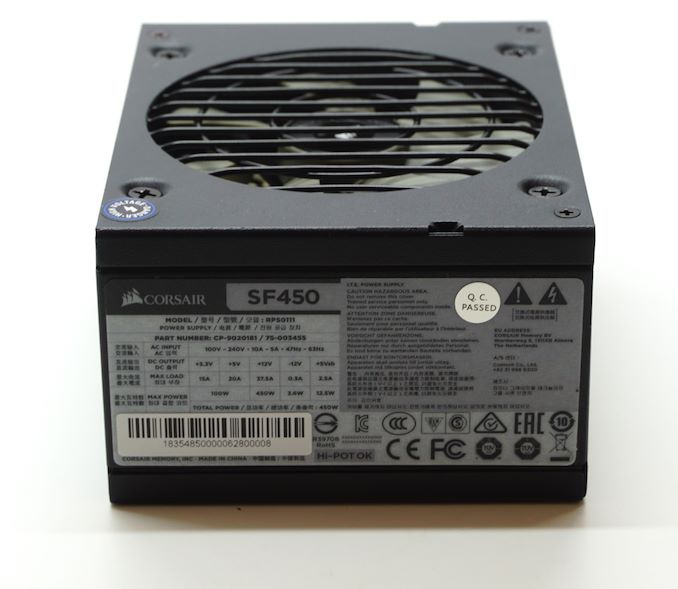
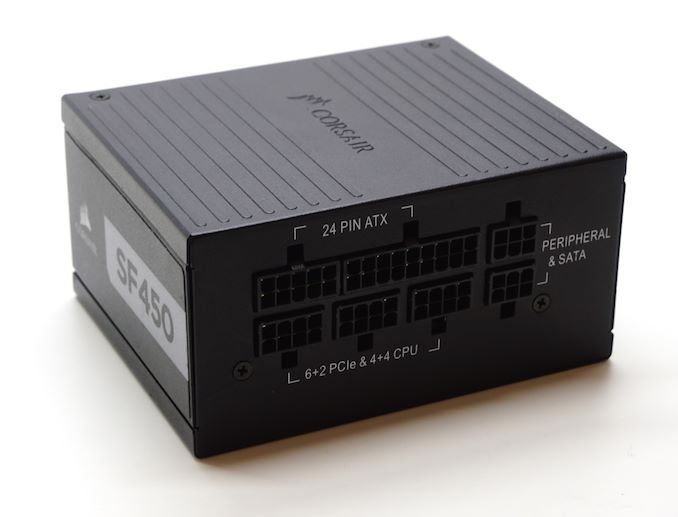
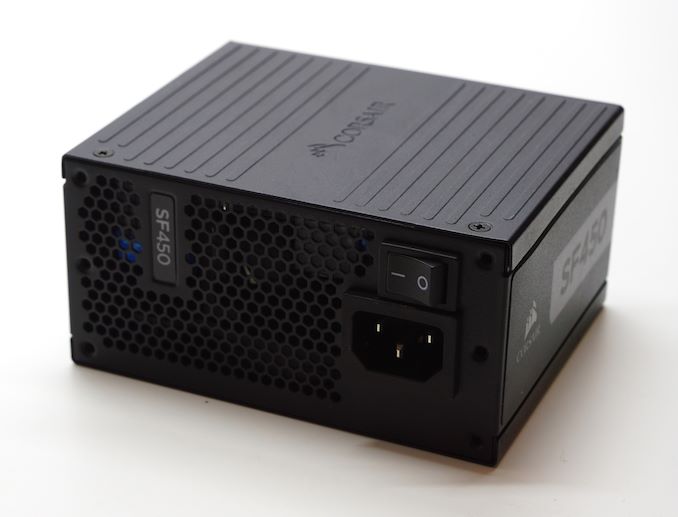
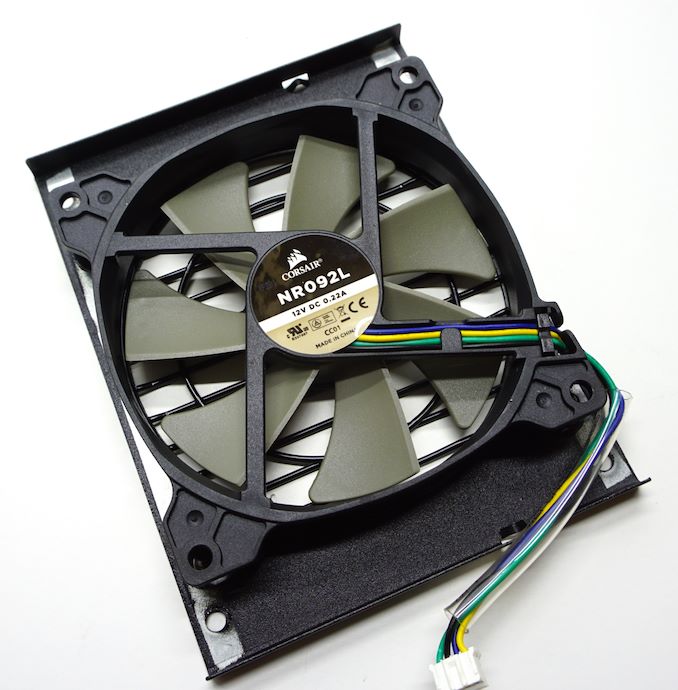
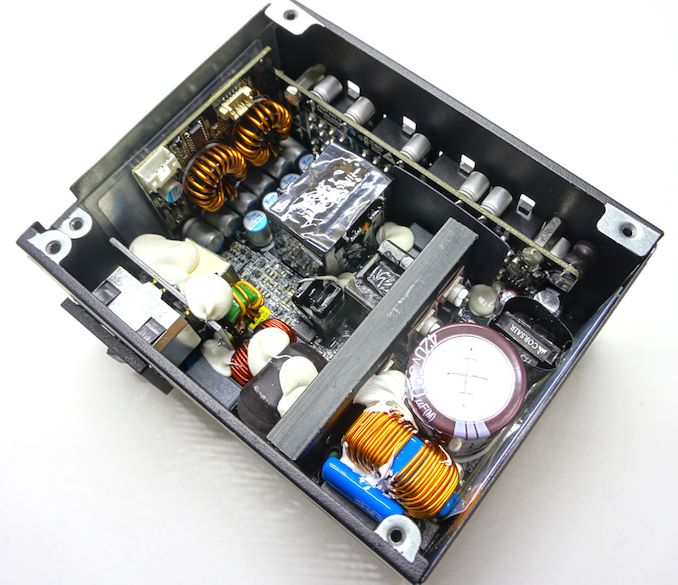
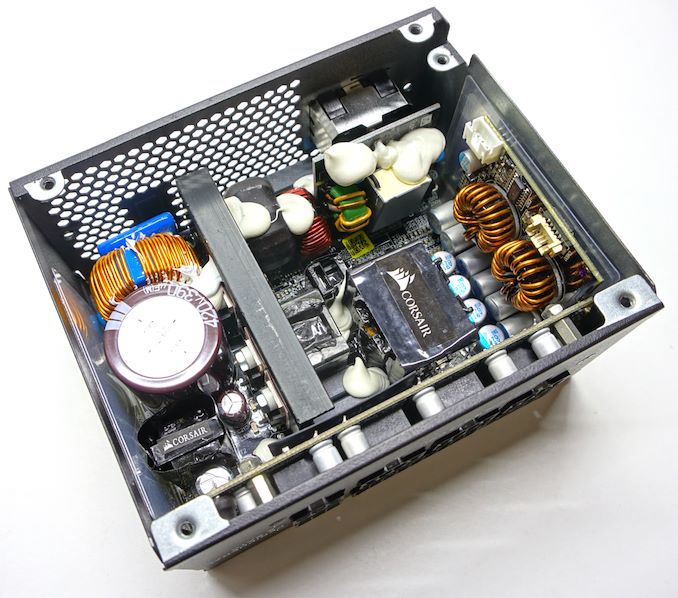
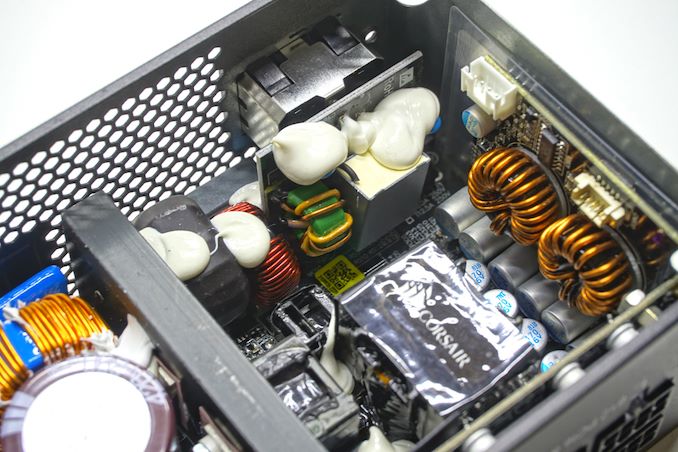
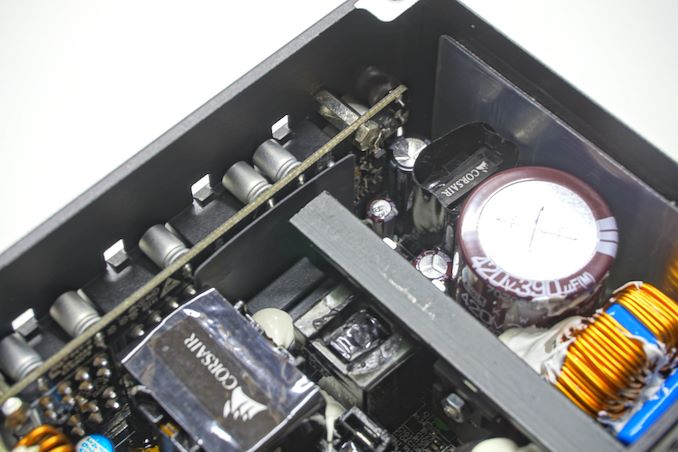








14 Comments
View All Comments
Spoelie - Tuesday, October 23, 2018 - link
Actually installed the 2015 in my ITX build one month ago (2700x & RX580) - both this and the 2018 were available in the shop but the most recent version came at a 25% premium (80 vs 100). I figured any improvements were not worth this premium, given how extraordinary the 2015 version already was (see jonny guru's review).JoeyJoJo123 - Tuesday, October 23, 2018 - link
Yeah, the price increase is a bit disappointing, since going from ~$80 to $100 is a 25% price hike. That being said, assuming SF450-2018 comes down in price a bit (even $90 would be good), I feel like it'd be a good replacement for the previous SF450, considering the additional benefits the new model comes with, as the 80+Plat rating.The initial hurdle with Mini-ITX is just paying extra for the form factor in regards to the case, sfx psu, heatsink quality for price/size (as opposed to cheaply affordable Cryorig H7 or CoolerMaster Hyper 212 +/Evo). (Followed by another hurdle with installation tediousness/difficulty of the cramped space and potentially unknown compatibility with certain parts which theoretically would've fit if it weren't for a piece that stuck out). Having to pay another $20 for a 80+Plat PSU over what most would already consider is _already_ great for an equal wattage 80+Gold PSU might just be another Nvidia RTX issue, where their hardest competition is ironically their older product which provided a compelling value at a lower total cost.
meacupla - Tuesday, October 23, 2018 - link
But have you ever used the ribbon cables that come with the Gold version?They suck shit.
The Platinum version already includes the individually sleeved cables, which are like $50 on their own.
DanNeely - Tuesday, October 23, 2018 - link
I've used other PSUs with flat ribbon cables that appear the same sort as with the gold 450 before without complaint. What don't you like about them?meacupla - Thursday, October 25, 2018 - link
The ribbon cables are way too damn stiff and the sata connectors are 90d, which don't work with quite a lot of mITX cases.Unless you want to break sata connectors on the drives, you either use the more malleable individually sleeved cables, or you use extensions that have 180d connectors.
Aneker - Wednesday, December 23, 2020 - link
Human stupidity has no limits. Firstly, I have to say that Platinum coated cables are much more rigid and difficult to maneuver than ribbon cables. Secondly, the designation Platinum is just marketing and it is false because the only difference is in the coated cables and this is perfectly ridiculous. .JoeyJoJo123 - Tuesday, October 23, 2018 - link
Uhhh... Yes? Have YOU ever tried stuffing cables in a low volume MiniITX build? It's not easy. I don't think I could've managed my build WITHOUT the thin ribbon cables that can be folded and wedged in nooks and crannies. The whole individually sleeved cable thing is just a meme to make PCs "look" prettier, but the fact of the matter is that those cables take a lot more volume and when you're building true miniITX, cable management becomes a big hurdle.https://imgur.com/a/HeiVayH
milkywayer - Tuesday, October 23, 2018 - link
And the 2019 will be the year of SFF pc. So many awesome cases and psu coming out. Including the next version of Dan Case and DrZaber Sentry as well as Louqe's 2nd batch of Ghost SFF. What a year.jonnyGURU - Tuesday, October 23, 2018 - link
FYI: It's not called "SF 2018". It's "SF Platinum". Calling it "2018" would imply it replaces the older, Gold version.. . Which it does not. Both are now being sold together, with the Platinum being sold at a slight premium.JoeyJoJo123 - Tuesday, October 23, 2018 - link
Good to know both models will remain in circulation. The 80+Gold SF450 was probably the next best choice to go with if the user wasn't comfortable with going with an 80+Bronze unit from Silverstone or someone, and was price competitive with all the other high efficiency SFX power supplies on the market. I was a bit concerned that the 80+Plat being a possible replacement would have pushed it out of that ideal position, leaving ITX builders with tougher budgets to accomodate.